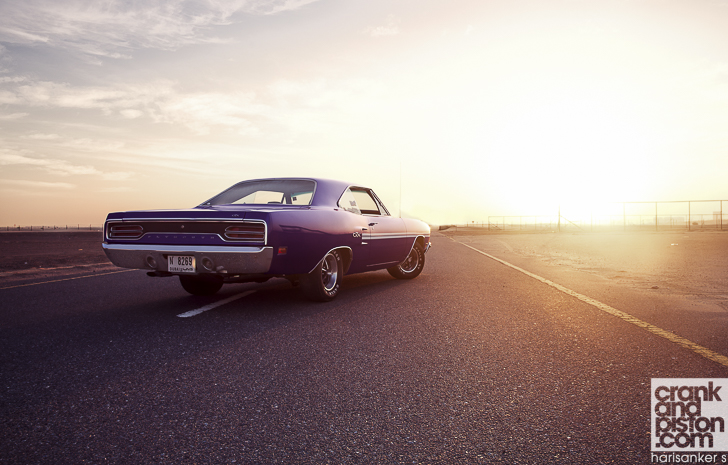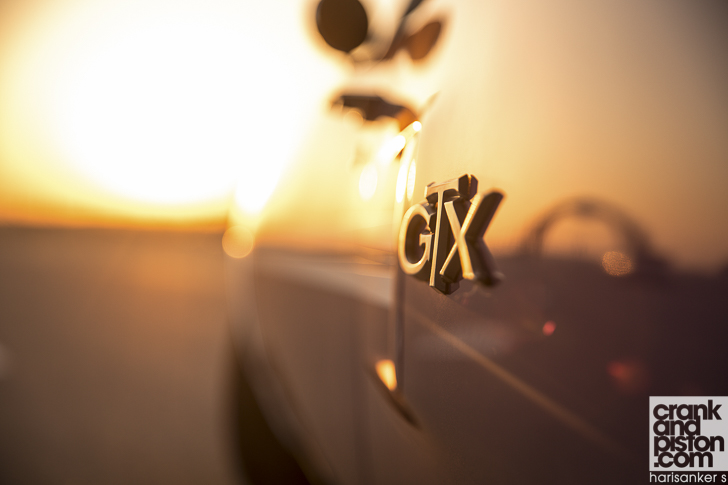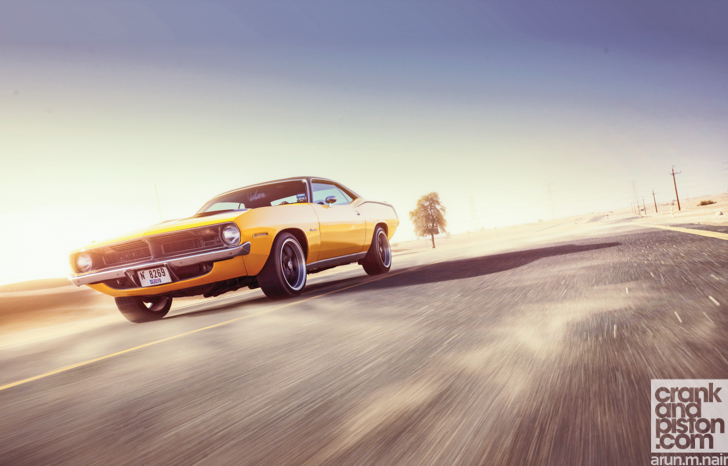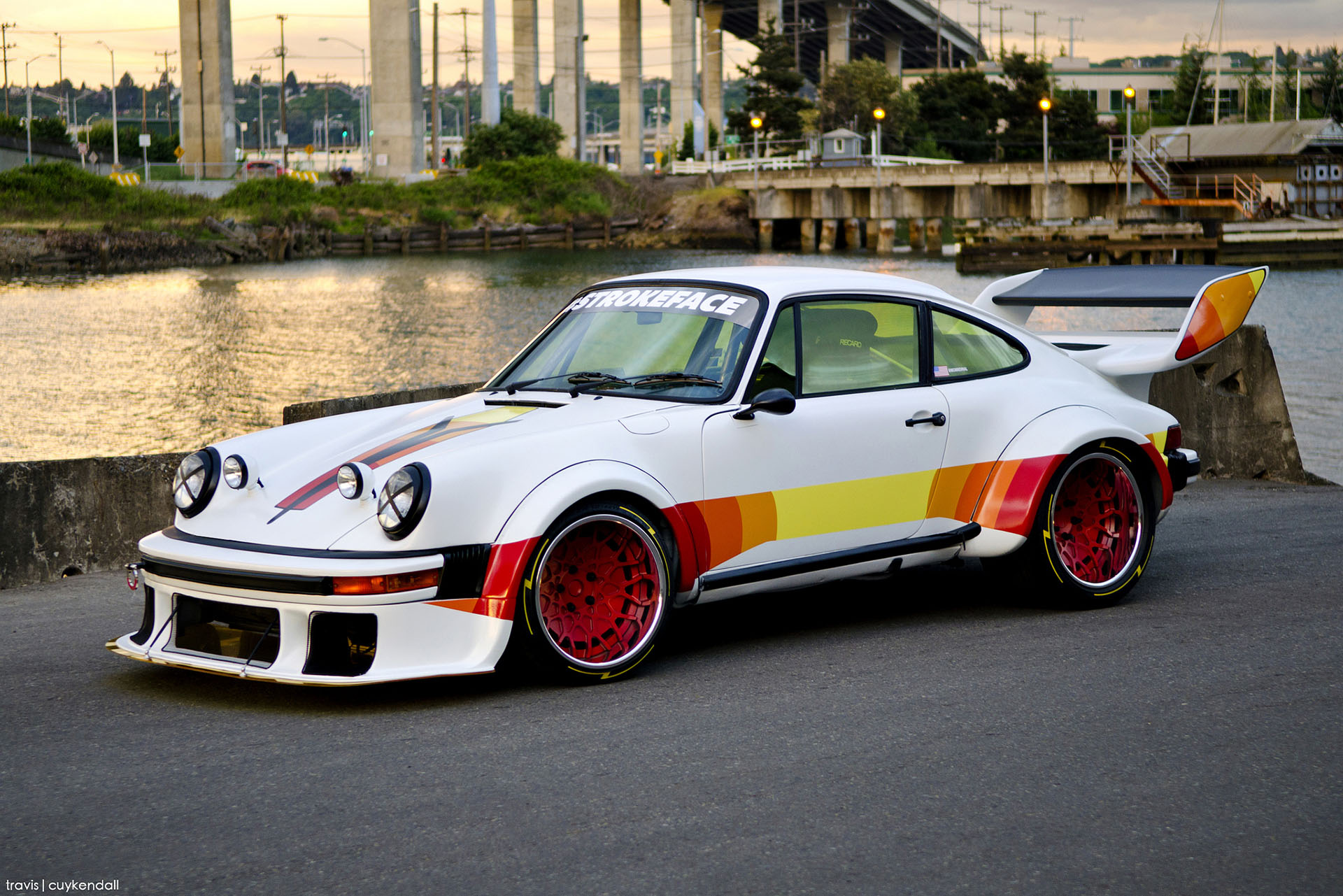With only a five year production run that spanned the later 1960s and early 1970s, the Plymouth GTX went out not with a bang, but with a whimper. 46 years later, crankandpiston.com find out if this muscle car was shortchanged.
| Engine | Power | Torque | 0-100kph | Top speed | Weight | Value today |
|---|---|---|---|---|---|---|
| V8, 7210cc | 375bhp @ 4600rpm | 490lb ft @ 3200rpm | 6.4 secs | N/A | 1597kg (235bhp/ton) | $68,000 |
It’s difficult to shake the strong sense of déjà vu that’s just hit me. To my left stands an iconic, if slightly less famous, American muscle car from 1970, the Arabian desert stretching out behind it. To my right, an enthusiastic owner speaking at length about the car’s place in history as I scribble furiously in my notebook. And just behind me, a frustrated photographer trying desperately to catch the mid-afternoon sheen as the sun begins to dip in the sky. Yep, I’ve definitely been here before. I think I might even be wearing the same shirt…
Indeed, as we get down to the nitty gritty, even our conversation starts to sound familiar. Since it rolled off the conveyor in 1970, the model we’re being let loose in today has boasted only three previous owners, all within the same family. There’s just a scant under 100,000km on the clock, and while there has been some moderate work done to the front and rear seats, everything on the car is of original spec, which might explain its $68,000 market value today.
I’ve been assured by owner Nader Elkhodary though that, unlike with his classic Barracuda we took for a spin back in May last year (hey, he’s a Plymouth guy), the GTX is another animal entirely: “seriously man, you will LOVE this. You’ve already tried the 350, but this thing’s got a 440 big block V8. If you’re not careful, it will spit you off the road,” all said with a beaming grin. Clearly Nader’s cheeky ability to rattle my nerves ahead of a drive in his daughter Salma’s future birthday present hasn’t dwindled since his last crankandpiston.com jaunt ten months ago.
There is one thing about the GTX though I wish to address before jumping behind the wheel. It’s purple….
“Actually, ‘burple,” I’m corrected (there’s that grin again). “Honestly, when I first saw the car, that was the only thing that really put me off, and it was a while before my friends convinced me to go for it. I wouldn’t dream of changing it though. It’s an original colour, a very rare one too. Plus, it’s only been repainted once in 46 years. How could I possibly change that without destroying the car’s history and its character?”
It’s a fair point, particularly apt since just one year after Nader’s example was produced, the GTX name disappeared entirely. Appearing initially as the Belvedere GTX back in 1967, Plymouth’s mid-sized saloon was positioned as Plymouth’s ‘gentleman muscle car’, offering, for the first time on a Plymouth, ‘stylish’ performance capabilities as standard without a wallet-rupturing price tag. Under the bonnet lay either a 440 cu in (7-litre) V8 or the more explosive 426 cu in HEMI (7.2-litre) capable of taking the GTX from 0-100kph in just under five seconds. Impressive for the late 60s, and still worthy(ish) of a 911 Carrera S today.
“Though Plymouth was unaware at the time, the Road Runner ultimately marked the end for the ‘gentleman’ GTX”
Rakish ‘coke bottle styling’ and a refined interior alongside its stonking firepower ensured interest in the Belvedere GTX remained high, though promotion by NASCAR ace Richard Petty didn’t hurt: in 1967, The King took his second of an eventual seven NASCAR Sprint Cup series crowns by winning more than half of the 49 races he entered in the #43. For 1968, the GTX – now rid of the ‘Belvedere’ nomenclature – earned an upscale redesign both inside and out, plus a new TorqueFlite automatic transmission now mated with either the 440 V8 or 426 HEMI. Of greater significance though was the introduction that same year of the Road Runner, Plymouth’s answer to customer calls for high-powered muscle below the $3000 mark, in keeping with the muscle car segment’s original concept. And though Plymouth was unaware at the time, the Road Runner ultimately marked the end for the ‘gentleman’ GTX.
With the convertible model canned for 1969, a design almost identical to the less pricey Road Runner and a higher price tag, sales of the GTX began to drop, a full overhaul for 1971 – including a new wheelbase, wider track and heavily revised looks – still not enough to counter growing interest in the Road Runner. Emissions regulations that put the GTX’s 426 HEMI under threat didn’t help either, and having barely hit 3000 sales, the GTX was accordingly pulled from production for 1972, existing thereafter as a performance trim for the Road Runner only.
Back to today, déjà vu continues on the inside, the leather-backed seats reclining in typical 60s muscle car fashion (much as they did in the Barracuda) with a single safety belt ready to be fastened across my lap. Peeking past the leather-clad thin-rimmed steering wheel is the usual array of speed and temperature gauges on the dashboard, dovetailed by wiper and headlamp switches on either side, as well as the ‘400’ written across the side of the power bulge on the bonnet. My eyes are drawn by the beautifully delicate spindle that controls the indicators mounted on the steering column, and the silver semi-circle inside the wheel itself which sounds the horn (or klaxon, more appropriately). I wonder just how delicate I’ll need to be to make sure I don’t break them. My left foot comes into contact with a switch in the floor, which Nader – now leaning through the window – explains is for the high beams. The two holes in the dash? Where the rev counter, now mounted by my right knee, used to be placed which made visibility pretty much impossible. And the Creedance Clearwater Revival 8 track cassette? “Well, some things never get old”.
Story concludes on page 2





